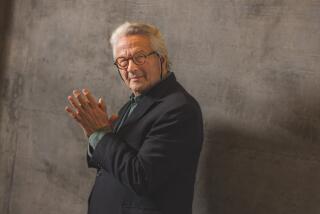OZ WIZARDRY
- Share via
In 1978, I was engaged by the New South Wales Film Commission to establish the Australian Film Office in Los Angeles with the mission of “penetrating the American market,” so I read David Hay’s article “Down Under the Cheery Surface” (Jan. 7) with interest. I believe there are some shadings I can add to his research.
The historical nature of many of the movies made in the ‘70s--a “cinema of nostalgia,” Hay calls it--was not solely a matter of choice for the young filmmakers blossoming in Australia at the time. It was also a function of the primary source of film funding: direct governmental financing contingent, among other things, on “Australian content” in subject matter. The easiest way to claim those funds was to base a picture of Australian history.
Hay suggests that the familiarity of the historical genre rendered Australian pictures “easily accessible to American audiences.” Our experience in selling the pictures was, unfortunately, quite the opposite. The young filmmakers were very leery of being culturally co-opted--I was told, more than once, that American “cultural imperialists” has undermined an indigenous Canadian film industry--and scorned any suggestion of compromising faithful adherence to historical fact (there was no Oliver Stone then) for any reason.
Hay also suggests that current Australian moviemakers are approaching subjects the earlier filmmakers didn’t and makes particular reference to pictures about the mentally challenged. “Tim,” a picture shot in 1979, starred young Mel Gibson as a beautiful but retarded youth hired by a well-to-do widow (Piper Laurie) who shocks a still-Victorian society by taking him into her bed.
No, there were all kinds of movies made in Oz in the ‘70s but, just as it is with movies here, not many of them were very good and you probably won’t see them here. We’re luckier than the Aussies; they, unfortunately, get to see everything we make.
SAMUEL W. GELFMAN
Los Angeles
More to Read
Only good movies
Get the Indie Focus newsletter, Mark Olsen's weekly guide to the world of cinema.
You may occasionally receive promotional content from the Los Angeles Times.










